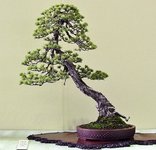penumbra
Imperial Masterpiece
It is an amazing work opf art but much less literati style than when you started IMHO.
I agree with you. It’s much more dense now.It is an amazing work opf art but much less literati style than when you started IMHO.
I love what you’re doing with the pads. I’d also love to see the apex more sparse (maybe with a jin) and with movement continuing to the left, rather than returning to center. Just my style preferences!Spring update:
View attachment 237811
There is a branch that bothers me: the third branch, the “back” branch. It arches too much. It cascades, but the shape is it comes off straight from the trunk, then turns down in a curve. It should drop more straight at where it’s attached to the trunk.
I’ll have to fix that later as this time of year is a bad time to be messing with the branches. All the new growth is fragile.
But the approach will be to attach a little piece of rebar (or maybe a heavy chopstick) to straighten out the arch, then guy wire down the rebar to the downward angle I want. This puts all the bend right at the beginning of the branch.
Like this:
View attachment 237812
Like Fig 16.
There is a branch that bothers me: the third branch, the “back” branch. It arches too much. It cascades, but the shape is it comes off straight from the trunk, then turns down in a curve. It should drop more straight at where it’s attached to the trunk.
No graft. It was created by an air layer.Is this one grafted? (The trunk, an inch or two up from the base.)
Here’s an update:Any update on this tree @Adair M? And would you mind specifying your technique for "cleaning" up the needles? Are you only removing previous years' needles that are about to fall off anyway? Or also removing this year's needles in the event they are growing downward/growing on an overly strong shoot? If so, are you cutting them at the base of the needle cluster (leaving a miniscule amount)? Thanks!
EDIT: Just went back and re-read your first post: "But some shoots grew out significantly stronger than others. We want them all to be at about the same strength. The ones that were stronger grew longer, and produced more needles. So, I’ve pulled extra needles from the stronger shoots to weaken them somewhat." To clarify, when you are reducing the needle mass on these stronger shoots, you are using scissors to cut the needles at their bases, and the needles you are cutting are the "furthest back" on each shoot, so there remains a tight cluster of needles at the end of each shoot, correct?
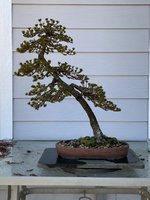
Gorgeous JWP. I really appreciated seeing the top-down shots of the wired branches a few pages back, as well. Thanks for the update and tips!Here’s an update:
I repotted it last March. I haven’t updated the wire, although there are a few twigs up in the apex and on some of the branches that I could wire if I going to show it. I keep it in full sun, so last spring’s needles are really short!
View attachment 349819
I do pull the needles when I remove them on this tree. I grab the needle clusters with sturdy tweezers right at the base. Zuisho needles are not very tightly attached, and pull off easily. I’m careful not to tear the twig in the process.
The juvenile bark on the trunk is just beginning to crack with age. It will take about 10 years to lose that juvenile look, and become flaky.
Here’s a new top down photo:Gorgeous JWP. I really appreciated seeing the top-down shots of the wired branches a few pages back, as well. Thanks for the update and tips!
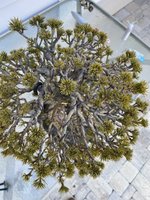



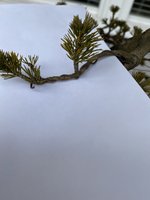

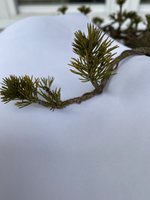

I didn't even consider the size of the branch, and I thought the branch looked good at that length. After your response, literati popped into my head lol Clearly this is why I am on these forums. As always Adair thank you for your wisdom it has and always is a pleasure to learn from you. Do you think going in a different direction that branch could ever be used in a final design or is the heft of it just a deal breaker all around?Actually, that branch is too big and too heavy and long. It forks pretty close to where it comes off the trunk, and I have considered removing the heavy fork, and just keeping the smaller fork. I’ll do that someday.
For now, I consider this pretty much as “a tree in training”, and it’s final form isn’t set yet.
Zuisho tends to form dense pads. Not the sparse foliage typical of literati. So, I’m waiting on seeing how this develops before I make any decisions.
It’s a fun tree, though.
Well... I think this tree has potential to be a “future” literati. For now, it’s a slant.I didn't even consider the size of the branch, and I thought the branch looked good at that length. After your response, literati popped into my head lol Clearly this is why I am on these forums. As always Adair thank you for your wisdom it has and always is a pleasure to learn from you. Do you think going in a different direction that branch could ever be used in a final design or is the heft of it just a deal breaker all around?
The updated photo looks great. I can't wait to see photos of this tree in summer.
